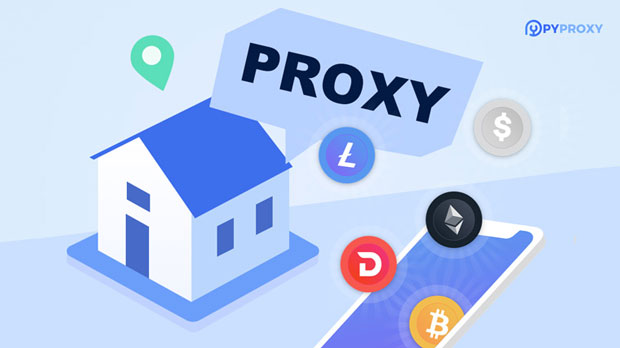In today's digital age, ensuring privacy and security while accessing online content has become crucial. One of the methods to achieve this is through proxies. Proxies act as intermediaries between the user and the websites they wish to visit, offering an additional layer of security. HTTP and HTTPS proxies are two commonly used types, each with its distinct features. When it comes to accessing online platforms such as torrent sites, the security level between these two proxies varies significantly. In this article, we will explore the security differences between HTTP and HTTPS proxies, specifically for accessing Extratorrent, and analyze how they impact users' privacy and data safety. Understanding HTTP Proxy SecurityAn HTTP proxy is a server that acts as an intermediary between a user's device and the internet when the user is trying to access web pages using the HTTP protocol. HTTP proxies are often used to bypass geographical restrictions, improve load times, or access restricted content. However, they do not offer encryption, meaning all the data sent between the user and the proxy is transmitted in plaintext.Security Concerns with HTTP Proxy:1. Data Interception: Since HTTP proxies do not encrypt data, any information sent through them is vulnerable to interception. Hackers or malicious third parties can easily access personal information such as login credentials, browsing history, and other sensitive data.2. Lack of Authentication: HTTP proxies do not validate the identity of the server they are connecting to, making it easier for attackers to set up fake proxies that capture user data.3. Insecure Communication: When accessing platforms like torrent sites via HTTP proxies, the communication between the proxy and the destination server remains unencrypted. This makes it easier for cybercriminals to perform man-in-the-middle attacks, where they can alter or inject malicious content into the communication.In conclusion, using an HTTP proxy while accessing torrent sites or any other platform can be risky, as it does not offer sufficient protection against data breaches or cyber-attacks.Understanding HTTPS Proxy SecurityOn the other hand, an HTTPS proxy works similarly to an HTTP proxy but adds an essential layer of security through encryption. When users connect to a website using HTTPS, the communication between the user's device and the website is encrypted, ensuring that no one can intercept or read the data during transmission.Security Benefits of HTTPS Proxy:1. Encryption: The most significant advantage of using an HTTPS proxy is that all data sent between the user and the proxy server is encrypted. This means that even if a hacker intercepts the data, they would not be able to read it without the decryption key.2. Privacy Protection: HTTPS proxies ensure that users' personal information, such as login credentials, browsing history, and even their IP address, is hidden from third parties. This makes it much more difficult for attackers or unauthorized entities to track users' online activities.3. Server Authentication: HTTPS proxies use SSL/TLS certificates to authenticate the server, ensuring that the user is connecting to a legitimate server. This minimizes the risk of falling victim to fake proxies set up by attackers to steal data.4. Secure Communication: By using encryption, HTTPS proxies prevent man-in-the-middle attacks. This means that when accessing a site like Extratorrent, the communication between the user and the website is secure, and any attempts to inject malicious content into the connection are thwarted.Given the increasing need for online security, HTTPS proxies are the better option when accessing torrent sites or engaging in any online activity that requires privacy.Key Differences in Security Between HTTP and HTTPS ProxiesNow that we have explored the individual characteristics of HTTP and HTTPS proxies, it is essential to highlight the differences in their security levels. These differences are especially critical for users who wish to maintain their privacy and safety while accessing platforms like torrent sites.1. Encryption: - HTTP proxies do not encrypt data, meaning all communications are sent in plaintext. This poses a significant security risk, especially when dealing with sensitive data. - HTTPS proxies, on the other hand, encrypt all data during transmission. This encryption ensures that the information remains private and protected from eavesdropping.2. Privacy and Anonymity: - HTTP proxies offer minimal privacy protection. Anyone who intercepts the data can easily access the user's information, such as their IP address and browsing history. - HTTPS proxies provide a higher level of privacy and anonymity. The encryption ensures that the user's activities cannot be tracked by third parties, and their personal data remains confidential.3. Risk of Data Manipulation: - HTTP proxies are more vulnerable to data manipulation. Since the data is not encrypted, attackers can alter the content sent between the user and the destination server. - HTTPS proxies prevent data manipulation through encryption and server authentication. Any unauthorized attempts to alter the data will be detected.4. Man-in-the-Middle Attacks: - HTTP proxies are highly susceptible to man-in-the-middle attacks, where attackers can intercept, alter, or inject malicious content into the communication. - HTTPS proxies provide strong protection against man-in-the-middle attacks, as the encrypted communication makes it nearly impossible for attackers to interfere with the connection.Practical Implications of Using HTTP vs. HTTPS Proxies for Accessing ExtratorrentWhen it comes to accessing platforms like torrent sites, the stakes are high. Torrents are often associated with illegal content, and accessing them without proper security measures can expose users to various risks.1. Legal Risks: In some regions, accessing torrent sites can lead to legal consequences. An HTTP proxy does not hide the user's IP address effectively, making it easier for authorities or internet service providers to track their activities. On the other hand, HTTPS proxies offer better anonymity, making it harder to trace the user's location and activities.2. Cybersecurity Threats: Without encryption, using an HTTP proxy leaves users vulnerable to cyberattacks, including malware, ransomware, and phishing. HTTPS proxies, with their encryption and authentication features, provide a safer environment for torrenting, reducing the likelihood of falling victim to such threats.3. Speed and Performance: While HTTPS proxies are more secure, they may cause a slight decrease in speed due to encryption overhead. However, this tradeoff is often worth the added security, particularly when accessing platforms where the risk of data breaches is high.ConclusionIn summary, while both HTTP and HTTPS proxies serve as intermediaries for accessing online content, their security implications are vastly different. HTTP proxies lack encryption, making them insecure and vulnerable to various threats, including data interception and man-in-the-middle attacks. On the other hand, HTTPS proxies offer robust encryption, authentication, and privacy protection, making them a far superior choice for secure online activities.For anyone accessing torrent sites, especially those that may involve sensitive or illegal content, using an HTTPS proxy is highly recommended. It ensures a higher level of security, privacy, and protection against cyber threats, ultimately safeguarding both personal information and online activities.
Jul 29, 2025



































































